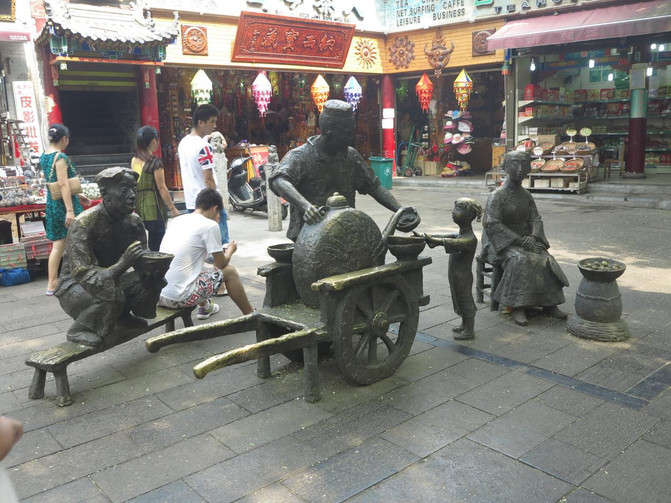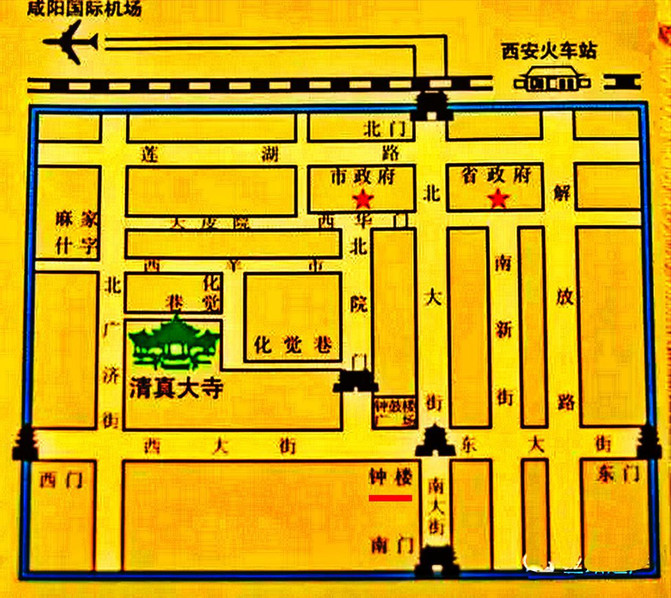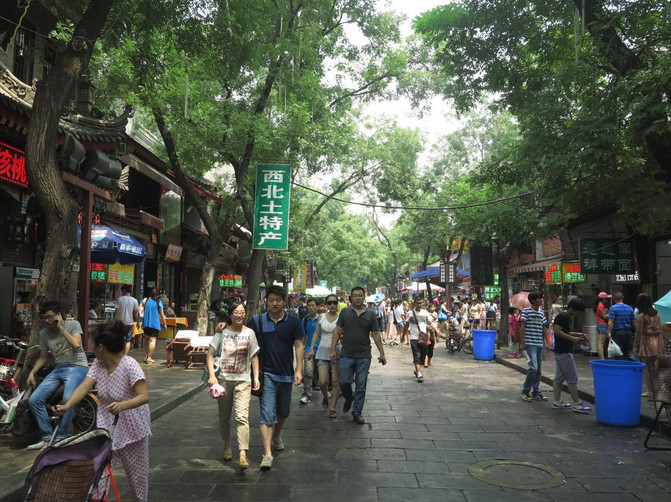Xi'an Style Office, Beiyuanmen Huifang Cultural Style Street
China is so big, I want to visit it. Take you to a place you have been or have not been.
Xi'an Style Office, Beiyuanmen Huifang Cultural Style Street
Xi'an is undoubtedly a tall ancient capital, but any famous historical and cultural city has some old streets and alleys that are fascinating. It receives thousands of tourists from all over the world every day, so there is a saying that "to Xi'an, you haven't reached Beiyuanmen Hui Street, which means you have never been to Xi'an." But this statement is a bit exaggerated.



"Beiyuanmen" or "Hui Street", the official name is "Beiyuanmen Huifang Cultural Style Street", which is a circular pedestrian district formed by Beiyuanmen, Xiyang City, and Huajue Lane. I went there a few years ago, and to be honest, the experience was not good. In addition to the two mosques being quiet, the streets and alleys feel like scattered and chaotic commercial markets.


Beiyuanmen is located at the northwest corner of Xi'an Drum Tower, and Hui people account for about 29% of the total population of the block. Beiyuanmen Street runs more than 500 meters from north to south, making it the street with the most dense number of tourists and the largest flow of people. There is no tourist bus here, no tour guide holding small flags, and tourists come here by themselves.
(Xi'an Drum Tower, the largest Drum Tower in China)




The history of Beiyuanmen can be traced back to the Tang Dynasty, belonging to the Imperial City of the Tang Dynasty, and was the main entrance of Shangshu Province at that time. The name Beiyuanmen began in the Qing Dynasty. In the early Qing Dynasty, the Shaanxi Governor's Office was located north of the Drum Tower, and south of the Drum Tower was the Shaanxi Governor's Office. The north and south were opposed. One was called "North Courtyard" and the other was called "South Courtyard". The street opposite the North Courtyard gate was called Beiyuanmen, also called "Beiyuanmen", and the other was called Nanyuanmen. The governor's office and the governor's office echoed each other and constituted the administrative center of Shaanxi at that time. Its position as the center of administration lasted until after liberation, lasting for 1400 years in ancient and modern times. It can be described as "a thousand-year dynasty and a iron-made yamen."
(Shipaifang at the north end of Beiyuanmen)

It is hard to imagine setting up a stall in front of the yamen. The reason was that when the Eight-Power Allied Forces captured Beijing in 1900, Empress Dowager Cixi and Emperor Guangxu fled west to the ancient capital of Xi'an. Ben slept in the Governor's Mansion (South Courtyard). Cixi felt that the land was small and crude, so she later placed the "palace" in the North Courtyard. For a time, the silver and goods paid by various provinces were also shipped to Xi'an, and the Beiyuanmen Silver Shop came into being and became popular for a time. Although the troubled Buddha and the emperor only lived in Beiyuan for half a year, the "prosperity" of Beiyuan continued until the Republic of China.


What's going on with "returning to the workshop"? During the Tang Dynasty, the streets and alleys were shaped like a square chessboard, and each "small square" was a "square". In the late period of the Anshi Rebellion, the Tang Dynasty used soldiers from Arabia and the Western Regions to help suppress the rebellion. Afterwards, the court promised that they could keep the capital and marry a Chinese woman. As a result, these officers and soldiers lived in the northwest of Chang 'an Imperial City, with the intention of defending the capital. Since then, they gradually formed the so-called "Huifang" in Xi'an. These people who believed in Islam learned the laws, systems and cultural etiquette of the Tang Dynasty while living and living in Chang 'an. The "Learning Alley" is still preserved in the North Gate. The Hui people are good at doing business and "doing business according to the square", forming the commercial atmosphere of Beiyuanmen.
(Beiyuanmen Dapiyuan Mosque has both Chinese garden characteristics and Islamic art style)



The best snacks are always scattered among the people, and the food here is also full of the atmosphere of the city. There are many famous foods and stories and legends. It is difficult to find a seat at a meal.






After eating a bowl of mutton and steamed buns, the restaurant was famous and the taste was not flattering. The steamed buns (cakes) are cut by a machine, and the soup is not very good.

If you can integrate into the local people's diet, the spicy sheep hooves on the street and the mutton offal soup are delicious.


Seeing local residents buying beef offal, I don't know if you dare to enjoy it.

The Hui people are characterized by "large dispersion and small concentration". Their residential areas are centered around the mosque and "live around the temple." The famous Zhenda Temple in Huajue Lane (i.e. Xi'an Mosque, introduced in the second chapter) was built by the emperor of the Ming Dynasty.

Huajue Lane is a settlement area inhabited by Hui ancestors, which means influence and enlightenment. The history of the alley can be traced back to the Tang Dynasty, and the Grand Mosque is located in this alley.

Xiyang City is on the west side of the middle section of Beiyuanmen. During the Yuan Dynasty, a market for trading sheep and mutton had been formed in this area, so the streets and alleys were first named Sheep Market. During the Republic of China, in order to distinguish it from the Yangshi on East Street, it was renamed Xiyang City. Xiyang City is mainly dominated by snack stalls and roasted seeds and nuts.
(Sweet jujube osmanthus cake)


There is an ancient house in the Ming and Qing Dynasties with a history of more than 400 years-the Gaojia Courtyard. Gao Yuesong, the owner of the Gao family compound, has his ancestral home in Zhenjiang, Jiangsu Province. In the 14th year of Chongzhen of the Ming Dynasty, 12-year-old prodigy Gao Yuesong took the imperial examination and was hand-picked by the emperor. Gao was a loyal and diligent official and had an honest style. He was deeply appreciated by the Empress Dowager. Later, he served as the Imperial Teacher, and his descendants served as officials for seven generations. The Empress Dowager ordered funds to repair the compound and made it the residence of the Gao family. Emperor Qianlong approved the "Bangshuiji" plaque, so the locals called it Bangshuifu. (Residential Building No. 144, Beiyuanmen, ticket is required)





The Hui settlement area was gradually formed during the Ming and Qing Dynasties. With Xi'an Mosque as the core, there are "seven temples and thirteen squares". There is a saying in Huifang that "the Gao family's walls, the Ma family's houses, and the Mi family's gold takes a bucket." Walking into the Gao family compound, it was really tall.
For more content, you can see my namesake "Travel of a Bug" and other self-media: Baijia Accounts/Sohu Accounts/Weixin Official Accounts/Today's Headlines/Little Information/Fun Headlines/Big Fish...
Previous Article:3015 's agreement
Next Article:The happiness of the bearded man
